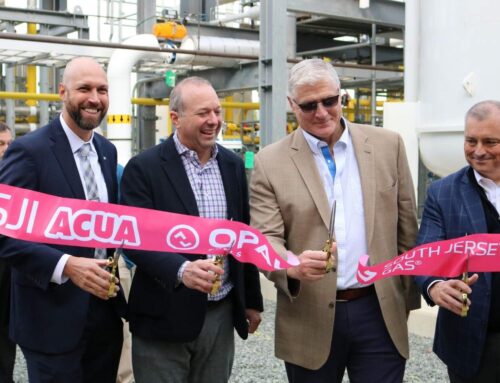Clearing The Path: Environmental Permitting In The Era Of Renewed American Manufacturing
October 24, 2025
Key Takeaways:
- Environmental reviews can cause major project delays.
Manufacturers must navigate complex federal, state, and local
approvals that can stall construction if not planned early. - Some reforms are streamlining — but vary by state. A
unanimous Supreme Court ruling and new federal guidance aim to
speed NEPA reviews, while states take differing approaches to
environmental review. - Proactive permitting strategies — through early
consultation, smart siting, and community engagement — help
manufacturers avoid delays and move projects forward with
confidence.
Manufacturers expanding in the U.S. often plan for tax
incentives, labor, and logistics—but not the time it takes to
secure environmental approvals from state and federal regulators.
Whether building new, expanding, or upgrading existing facilities,
companies may encounter a complex mix of local, state, and federal
permitting requirements—covering air emissions, stormwater
and wastewater discharges, wetland impacts, water withdrawals, and
impacts to wildlife or endangered species. In some cases, projects
may also trigger review under the National Environmental Policy Act
(NEPA) or a state-level equivalent.
These reviews are intended to protect air, water, and ecosystems
and to help ensure that growth is sustainable. These processes are
not just bureaucratic hurdles—they’re path critical. As
the U.S. manufacturing renaissance accelerates, companies that plan
ahead can turn environmental permitting from a source of delay into
a competitive advantage. Some recent federal and state reforms can
make reviews faster, more focused, and more predictable—if
businesses know how to navigate them.
Environmental Approvals Can Cause Costly Delays
For decades, environmental permitting has long been a source of
delay for complex construction projects, particularly those
involving federal approvals or sensitive environmental resources.
Delays in permitting can stall projects for months or even years,
adding uncertainty and cost.
Take NEPA reviews, as just one example. NEPA, originally
designed to ensure that federal agencies “look before they
leap,” requires regulators to assess the environmental impacts
of “major federal actions” before making permitting
decisions. Under NEPA, and its state equivalents, agencies must
prepare an Environmental Impact Statement—or EIS—when a
project could significantly affect the environment; it’s a
detailed report that evaluates potential impacts and alternatives
before a final decision is made.
EISs once spanned hundreds of pages but now routinely run into
the thousands of pages, and reviews and approvals can take years
for agencies to complete. EISs are costly. They require retention
of experts to study a host of potential issues including species,
wetlands, noise, traffic, geological, and emission impacts.
In some cases, opponents to a proposed construction project use
NEPA and its state counterparts strategically to delay or derail
development by challenging the scope or sufficiency of the EIS.
A Unanimous U.S. Supreme Court Urges More Efficient
Environmental Reviews
Recent actions by the U.S. Supreme Court and the Trump
Administration signal a more streamlined, focused approach to
environmental review—one that could help manufacturers move
projects forward with greater speed and certainty.
Leading the way is a recent unanimous U.S. Supreme Court
decision in Seven County Infrastructure Coalition v. Eagle
County. Seven County assessed a lower court decision
that invalidated a 3,600-page EIS for failing to analyze upstream
and downstream environmental impacts not directly caused by the
proposed railroad project at issue.1 The unanimous
Seven County Court called for a “course
correction,” warning that NEPA had been transformed from a
“modest procedural requirement” into a “blunt and
haphazard tool” used to slow or stop infrastructure
projects.2
The Court emphasized that agencies must focus on the project
before them—not hypothetical ripple effects from other
projects “separate in time or place.”3 The Court made
clear: “A relatively modest infrastructure project should not
be turned into a scapegoat for everything that ensues from upstream
oil drilling to downstream refinery
emissions.”4
This decision does not mean environmental review is going away,
but it may signal a more balanced approach to such reviews, at
least at the federal level. Agencies still need to take a
“hard look” at environmental impacts—but courts
must give agencies room to make reasonable, scientific decisions.
And when agencies stay within their lane, they should not be
second-guessed for not analyzing attenuated impacts.
This clarification is significant for manufacturers, who often
face NEPA-triggered delays even when their projects are
environmentally sound and economically vital.
The Federal Government Aims for More Efficient Reviews,
Too
The Seven County decision dovetails with changes from
the White House Council on Environmental Quality (CEQ). On November
12, 2024, in Marin Audubon Society v. Federal Aviation
Administration, the D.C. Circuit Court of Appeals held that
CEQ lacks the authority to issue binding regulations.5
This was a shocking ruling—CEQ has been promulgating NEPA
regulations for almost 50 years under the auspices that its
regulations were binding. Invalidating CEQ’s regulations erased
EIS and NEPA rules that had been incorporated by many federal and
state agencies.
On February 25, 2025, following the Marin Audubon
decision and an Executive Order from President Trump (EO 14154),
CEQ withdrew its binding NEPA regulations and is now issuing
non-binding guidance to help agencies align their procedures with
recent case law.6 While not binding, CEQ encourages
agencies to emphasize:
- Shorter timelines for EISs,
- Clearer scoping to avoid analysis of
speculative or unrelated impacts, - Greater interagency coordination, and
- Public transparency throughout the review
process.
The bottom line: federal agencies are being encouraged to move
faster, stay focused, and avoid speculative analysis.
Some States Are Following Suit While Others Stay the
Course
As federal agencies move toward faster, more focused
environmental reviews, many states are modernizing their own
permitting systems with digital tools, clearer timelines, and
greater transparency. But not all states are moving in the same
direction.
Standardization in Virginia—Virginia’s
Department of Environmental Quality launched a major overhaul of
its stormwater permitting process which took effect July 1, 2024.
The new handbook consolidates and modernizes regulatory guidance
for new development, redevelopment, and upgrades to existing sites.
It seeks to (a) streamline permit review timelines, (b) standardize
best management practices (BMPs), and (c) incorporate stakeholder
feedback through a new committee. Its goal is to create a more
predictable and transparent permitting framework.
Digitalization in Arizona—Arizona’s
Department of Environmental Quality (ADEQ) implemented a fully
digital environmental permitting and compliance portal. It allows
businesses to apply for permits, submit reports, and track
compliance online, significantly reducing administrative burdens
and improving transparency. Arizona’s mission is to deliver
“government at the speed of business.”7 Early
reports indicate that the online portal has reduced permit
processing times by 93%, digitized 98% of services, and reaped an
annual economic benefit of about $164 million.8
Project-Specific Streamlining in California &
Massachusetts—Streamlining environmental reviews at the
state level is often driven by specific project types. In June,
California signed into law revisions to the California
Environmental Quality Act that would exempt certain housing
projects from environmental review.9 Similarly,
Massachusetts is in the middle of a rulemaking to streamline
environmental reviews for certain housing, ecological restoration,
and urban renewal plans.10
Others Push Back—Not all states are embracing the
federal trend. Nineteen state attorneys general opposed CEQ’s
withdrawal of its NEPA regulations,11 and some states
are strengthening their own environmental review
laws.12
The takeaway for manufacturers? State-level permitting dynamics
vary widely. Understanding where a state stands—whether
it’s streamlining or adding new layers of review—should
be a key part of any site selection strategy.
Change in NEPA Approach May be a Relief for Industry
For manufacturers, recent changes to NEPA and environmental
reviews at the federal level—and in some states—offer
real business value: faster time to market, fewer legal surprises,
and greater confidence in long-term planning. For manufacturers
investing in clean technologies, advanced manufacturing, and energy
transition infrastructure, a streamlined permitting environment
also helps level the playing field—while still ensuring
meaningful environmental oversight.
Of course, NEPA is just one piece of the puzzle. Manufacturers
must still navigate a range of other environmental approvals and
resource considerations. Permitting strategy should be integrated
into early-stage planning, not treated as a post-site-selection
hurdle. But with the right strategy, permitting can be managed and
growth can move forward with confidence.
Other Environmental Permitting and Resources Integral to
Development
While the Trump Administration and U.S. Supreme Court have
signaled a move to more streamlined environmental reviews and a
major overhaul of NEPA, many development projects or expansions
that lack a federal nexus and do not otherwise implicate NEPA or
its state counterparts may nevertheless need to secure a panoply of
other environmental permits at the local, state or federal level
and may require significant environmental resources that will be
essential to making siting decisions and that can have a
significant impact on project cost and timing.
An expansion project or new development could require permits
for air emissions, stormwater discharges, wastewater discharges,
wetlands impacts, impacts to endangered species or their habitat,
and impacts to shorelands, among others. Local governments may have
additional permitting requirements related to zoning.
Beyond permitting, companies will need to consider their natural
resource needs when siting a project. For example, semi-conductor
manufacturers and data centers, which require significant volumes
of water for their operations, will need to ensure they have an
adequate water supply prior to developing or expanding in an area.
Whether supplying water through contracts with an existing water
supplier, seeking a new surface water right, or pumping
groundwater, each may trigger additional regulatory
requirements.
Practical Permitting Strategies
Manufacturers should proactively strategize to ensure a
comprehensive, though efficient, plan is in place for securing all
necessary permits. Missing a single permit, or underestimating how
long a permit could take to secure, could put an indefinite hold on
a project and increase costs as a result. To avoid such pitfalls,
some things manufacturers might consider are:
- Early consultation. Getting experts involved
early in the process can help determine the universe of applicable
environmental permits. Likewise, engaging with relevant state and
federal regulators early can help things move more smoothly going
forward, and many agencies require pre-permit reviews prior to
permit application submittal. - Site selection. As noted above, not all sites
are created equal. For example, a facility requiring a major source
air permit located in an area designated as being in
“nonattainment” will trigger more burdensome
requirements, including the potential need for emission credits,
which can be scarce or prohibitively expensive to acquire in many
areas. Siting in an area with endangered or threatened species,
wetlands, or historical artifacts could trigger additional,
potentially lengthy, agency consultations and procedures. - Public involvement. States and agencies also
have different procedures for when and how the community may get
involved in project development or expansion. In some cases, a
project opponent can contest the issuance of a permit, triggering a
lengthy administrative process similar to a court proceeding. Some
states have provisions that allow a permittee to abbreviate this
process. In Texas, for example, a permit-seeker that knows it will
likely be challenged can opt to send its permit application
directly to an administrative body, bypassing the months-long
process of establishing who, if anyone, is sufficiently affected by
the permit to bring a challenge. More fundamentally, building a
relationship with the relevant community may create opportunities
for a permittee to address concerns without having to go through a
hearing in the first place.
It’s an exciting time for American manufacturing and
development. Environmental review and permitting requirements can
be complex and highly technical, and can be a thorn in the side of
development and expansion. However, with the right permitting
strategy these requirements can be managed and met in due course
rather than creating a stumbling block for new growth.
Footnotes
1 Seven Cnty. Infrastructure Coal. v. Eagle
Cnty., 605 U.S. ___ (2025).
2 Id. at slip op. at 12, 13.
3 Id. at slip op. at 19.
4 Id.
5 Marin Audubon Soc’y v. Fed. Aviation
Admin., 121 F.4th 902 (D.C. Cir. 2024).
6 Council on Env’t Quality, Memorandum for Heads
of Federal Departments and Agencies: Implementation of the National
Environmental Policy Act (Sept. 29, 2025), https://ceq.doe.gov/docs/ceq-regulations-and-guidance/Agency-NEPA-Implementation-Guidance.pdf.
7 Ariz. Gov’t Transformation Off., The Arizona
Management System: An Evaluation of Continuous Improvement in State
Government 1–2 (Dec. 2022), https://results.az.gov/sites/default/files/2022-12/AMS%20evaluation%2012.20.22_0.pdf.
8 Ariz. Dep’t of Env’t Quality, Project
Investment Justification: myDEQ Underground Storage Tank
Applications Improvements – FY24, at 9–10 (June
21, 2023), https://aset.az.gov/sites/default/files/2023-06/EV23014%20PIJ-ITAC-PRESO%20062123.pdf.
9 Cal. Assembly Bill No. 130, 2025, https://leginfo.legislature.ca.gov/faces/billNavClient.xhtml?bill_id=202520260AB130.
10 Mass. Exec. Off. Energy & Envt’l Affairs,
Background Document on Proposed Regulations by Massachusetts
Environmental Policy Act (MEPA) Office, Oct. 7, 2025, https://www.mass.gov/doc/mepa-regulations-background-document-10725/download.
11 Comments of Attorneys General re: Interim Final Rule
– Removal of National Environmental Policy Act Implementing
Regulations, Mar. 27, 2025, Docket No. CEQ-2025-0002.
12 See, e.g., New York Dep’t of Envt’l
Conservation, The Environmental Justice Siting Law, last
visited Oct. 20, 2025, https://dec.ny.gov/environmental-protection/environmental-justice/the-environmental-justice-siting-law
(agency undergoing rulemaking to implement law requiring agencies,
as part of their environmental review, to consider whether an
action may cause or increase a disproportionate pollution burden on
a disadvantaged community); Held v. Montana, 419 Mont. 403
(2024) (finding unconstitutional a provision of the Montana
Environmental Policy Act that precluded an analysis of greenhouse
gas emissions during environmental reviews).
The content of this article is intended to provide a general
guide to the subject matter. Specialist advice should be sought
about your specific circumstances.
Search
RECENT PRESS RELEASES
Related Post




